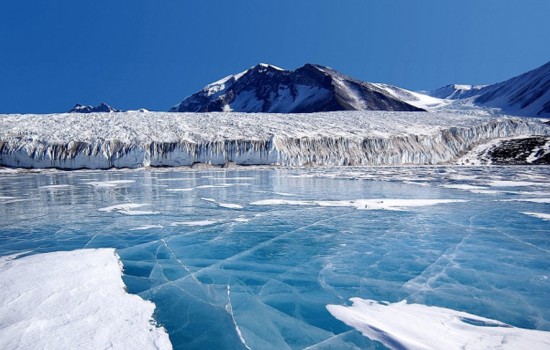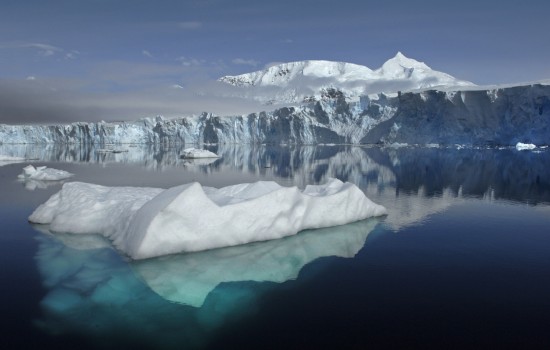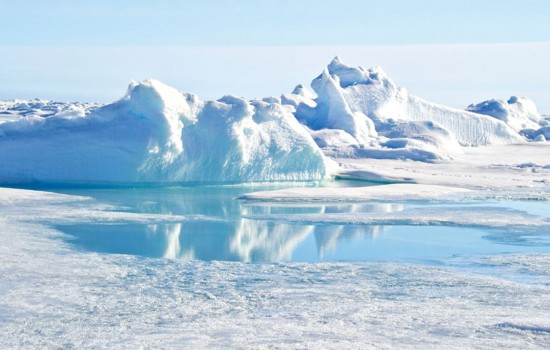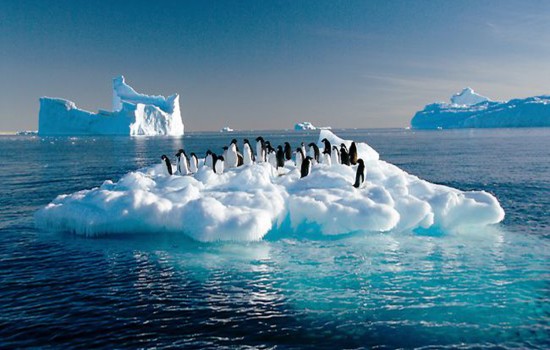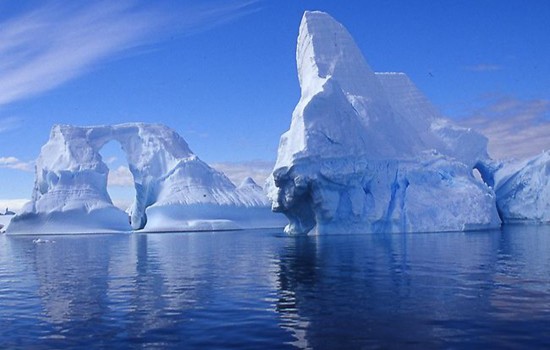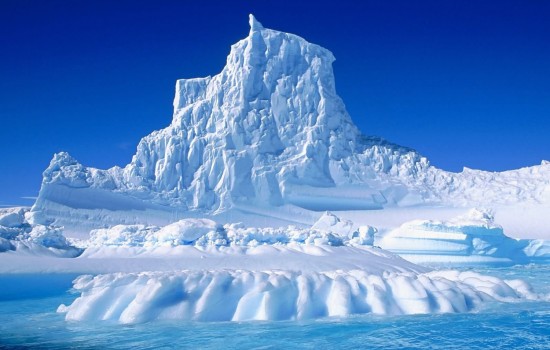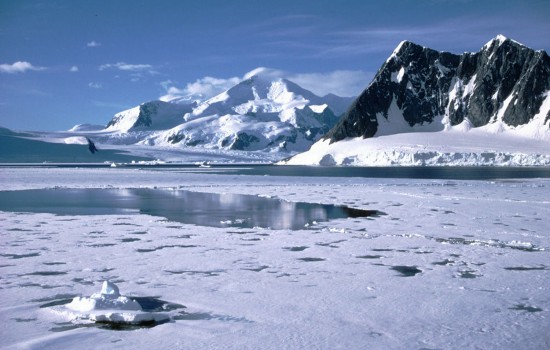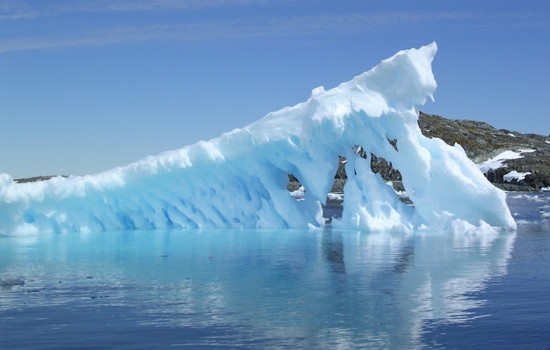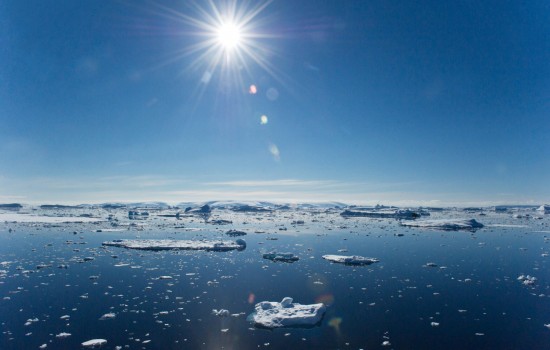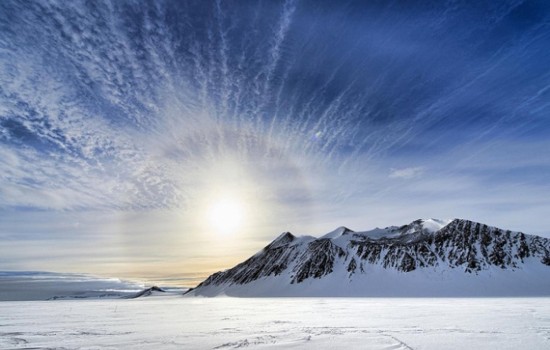The Antarctic Enviroment
The coldest, highest, windiest, driest continent on Earth
The landscape
The Antarctic continent is a land mass covered with ice up to 4 km thick. The highest point is approximately 4 km above sea level. There is little exposed rock and, although millions of years ago there was heavy vegetation, today the only plants that grow are very small mosses and lichens. Antarctica is the highest, driest, windiest and coldest continent in the world.
Geography
About 98% of Antarctica is covered by the Antarctic ice sheet, a sheet of ice averaging at least 1.6 km thick. The continent has about 90% of the world’s ice and thereby about 70% of the world’s fresh water. If all of this ice were to melt, sea levels would rise about 60m. Antarctica is divided into two contrasting parts by the Transantarctic Mountains that cross the continent close to the ‘neck’ between the Weddell and Ross Seas.
Height of Antarctica
Antarctica has an average elevation of 2500 metres, the highest of all the continents. The highest mountain in the eastern sector of the Australian Antarctic Territory is Mt McClintock (3492 metres) and highest mountain in the western sector of the Australian Antarctic Territory is Mt Menzies (3228 metres). Vinson Massif is the highest mountain in Antarctica, at 4897 metres.
Snow (precipitation) in Antarctica
Antarctica is the driest continent on earth. The amount of moisture received by the polar plateau is comparable to that falling on the world’s hot deserts.
Wind in Antarctica
Antarctica is the windiest continent on earth. Winds flow down the coastal slopes under the influence of gravity. These katabatic wind speeds have been recorded at up to 327 km per hour.
Climate
Antarctica is a frozen desert with little precipitation; the South Pole itself receives less than 10cm per year, on average. Temperatures reach a minimum of between -80C and -90C in the interior in winter and reach a maximum of between 5C and 15C near the coast in summer.
Size of Antarctica
With all islands and ice shelves, Antarctica is nearly 1½ times the size of the USA, twice the size of Australia, and 58 times the size of the UK. It covers 13,661,000 square kilometers.
The closest country to Antarctica
South America, the point of which is shared by Argentina and Chile, is the closest continent to Antarctica. At the tip of the Antarctic Peninsula, 1238 km south of Ushuaia (the southern-most city of Argentina) is the Argentinian station Vice Comodoro Marambio.
In contrast, the distance between Hobart, Tasmania (where the Australian Antarctic Division is situated) and Australia’s closest station, Casey, is 3443 km.
Flora
The flora of the Antarctic consists of around 250 lichens, 100 mosses, 25-30 liverworts, around 700 terrestrial and aquatic algal species, an unknown number of (mostly microscopic) fungi, and 2 flowering plants. The main factor that determines the distribution of terrestrial plant life in Antarctica is the availability of free water. Lichens have a number of adaptations that enable them to survive in Antarctica. They are able to exhibit net photosynthesis while frozen at temperatures as low as -20C.
Fauna
Few terrestrial vertebrates live in Antarctica. Invertebrate life includes microscopic mites, lice, nematodes, tardigrades, rotifers, krill and springtails. Recently ancient ecosystems consisting of several types of bacteria have been found living trapped deep beneath glaciers. The wide variety of marine animals includes blue whales, orcas, colossal squids, fur seals, and several species of penguins. Emperor and Adélie penguins make the Antarctic continent their true home, while others (chinstrap, gentoo, and macaroni) breed on the northern tip of the Antarctic Peninsula, where conditions are less harsh.
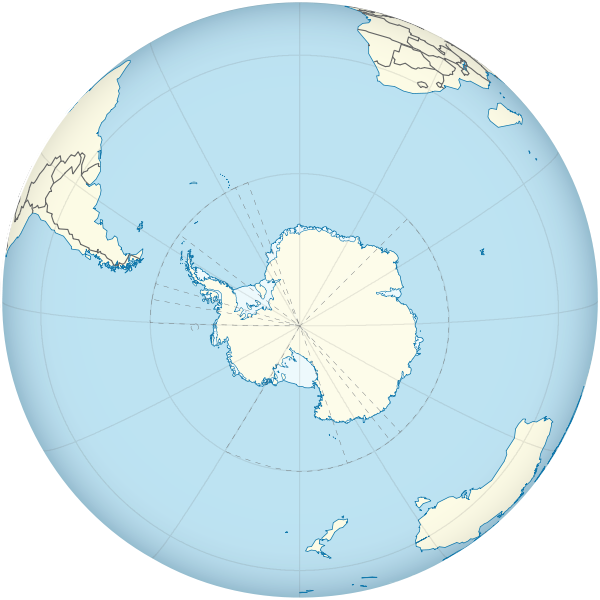

Krill Represents a Clean Source of Omega-3s
The Southern Ocean around Antarctica is one of the cleanest oceans on Earth
Antarctic krill are so low in the marine food chain and live in the cleanest waters on earth that they are naturally low in accumulated contaminants. These factors together make krill a truly superior source of nutrition for their natural predators as well as for humans.


- KrillanTM is a product of superb quality that comes from a single source; Euphausia superba, better known as krill.
- The Antarctic krill lives in the coldest and most pristine waters on earth.
- The southern hemisphere is mainly occupied by water and the land masses are not impacted by industry and agriculture like many northern areas are.
- The Antarctic Circumpolar Current isolates the Antarctic region from other oceans and volatile contaminants therefore reach Antarctica only by air transport



